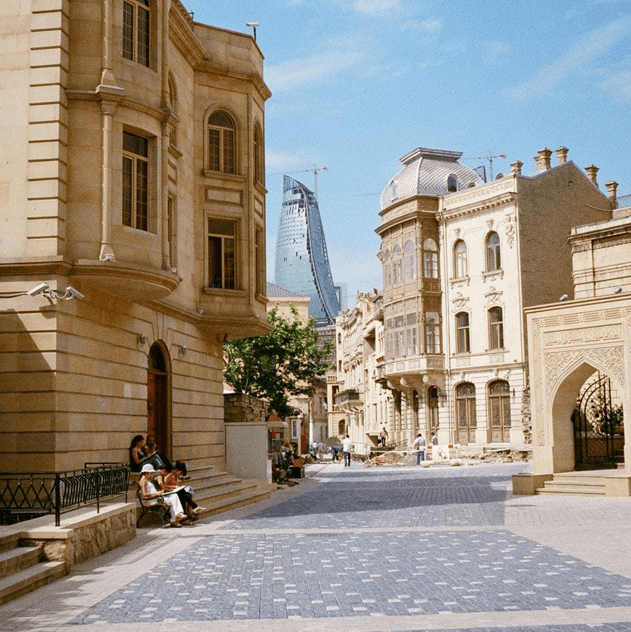
Icharishahar
It is located in the center of Baku in a 22 hectares area and is surrounded by fortress walls. A number of museums, 18 hotels, over 100 trade and catering facilities operate in Icharishahar. Icharishahar together with the Maiden Tower and the Palace of Shirvanshah’s were included in the UNESCO World Cultural Heritage list in 2000.
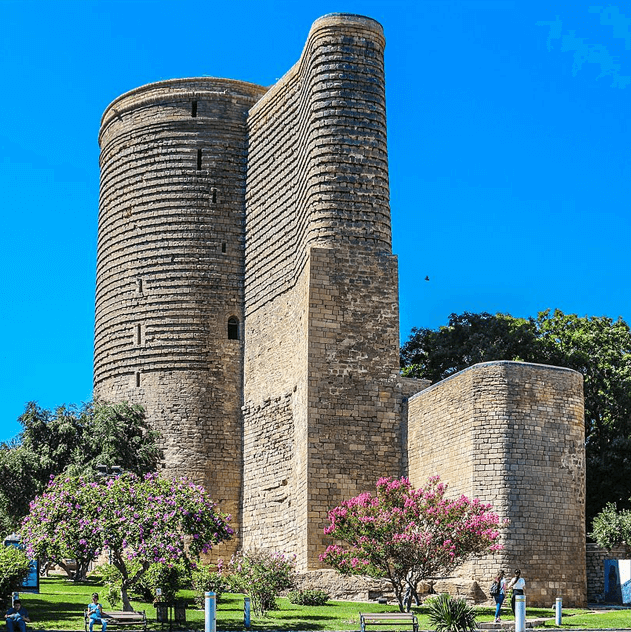
Flame Towers
The Maiden Tower is a Baku landmark, a much loved symbol of the city and of Azerbaijan. It looms dark and enigmatic, looking out to sea from the southern edge of Baku´s old, walled city, the Icherisheher. The origins of the tower are shrouded in mystery - no-one knows for certain when it was built or what it was built for or even how it acquired its name Maiden Tower. No written sources survive that record its construction or original function. From aerial view it resembles “Buta” (Paisley pattern), which is the quite symbolic ornament of Azerbaijan. It could possibly be a temple of Zoroastrianism, as the “buta” stated earlier is simply an image of fire. In the 12th century it was used as a fortress of Shirvanshahs for defensive causes. Since 2000, Maiden Tower has been included in the UNESCO World Heritage List.
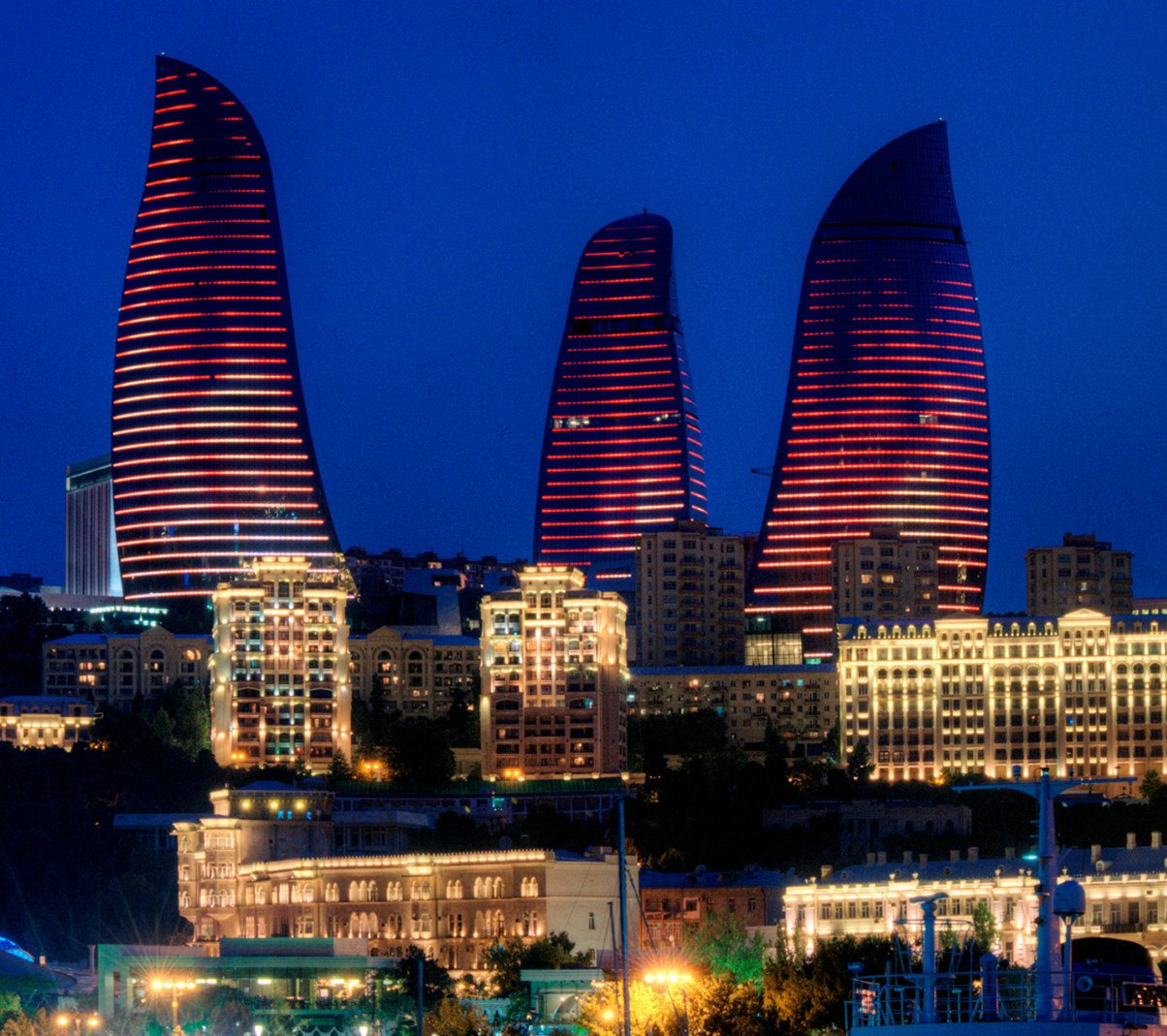
Maiden Tower
It is a complex comprising of three skyscrapers. The appearance looks like a flame. The height of the Flame Towers, which is considered the highest building of Baku, is 190 metres and overall area is 235 thousand square metres. Hotels, apartments and offices are included in the building. The construction was finalized in 2012. The Flame Towers was declared as the winner of MIPIM Award 2013 “The best hotel and tourism center” which is the biggest innovation project in European real estate market.
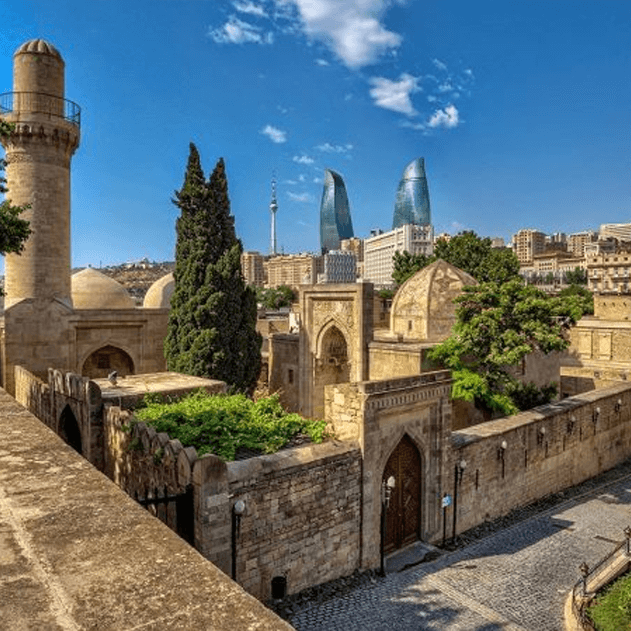
Shirvanshah’s Palace
The Shirvanshah’s Palace, which was a residency of Shirvan rulers, was built after the relocation of the capital to Baku as a result of the earthquake in Shamakhi in the XII century. The Palace complex consists of 9 buildings which are distinguished for their architectural structure and function. The “Shirvanshah’s Palace Complex” became the State Historical and Architectural Reserve Museum in 1954.

Heydar Aliyev Centre
The Heydar Aliyev Centre is a 57,500 m2 complex in Baku, designed by Iraqi-British architect Zaha Hadid and noted for its distinctive architecture and flowing, curved style that eschews sharp angles. As a brilliant piece of post-modern architecture, the building’s shape is an eternal cycle, connecting the past with the present. The building houses a conference hall, a gallery hall, and a museum. The centre expands the relations between countries and people through its projects. The building won London Design Museum award in 2014.
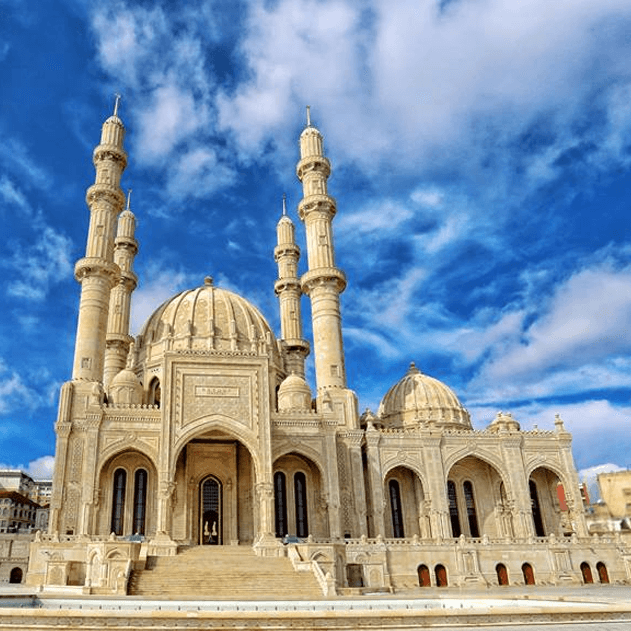
Heydar Mosque
The mosque, which was built in 2014, covers a total area of 12,000 square meters. The facade of the building was decorated with special stones based on the Shirvan - Absheron architectural style and has four 95 m height minarets. The opening ceremony of the Heydar Mosque was held on December 26, 2014.
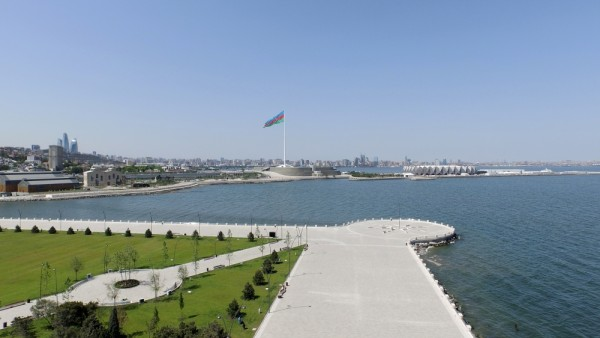
National Seaside Park
It is one of the main places for recreation and entertainment for the residents of the capital, as well as guests. The Baku Boulevard, second in Europe in terms of its size, has the status of National Park since December 29, 1998. At present, the length of the boulevard is 16 kilometers. Regular carriage and sea trips are organized here. Various carousels and attractions operate in the National Park.
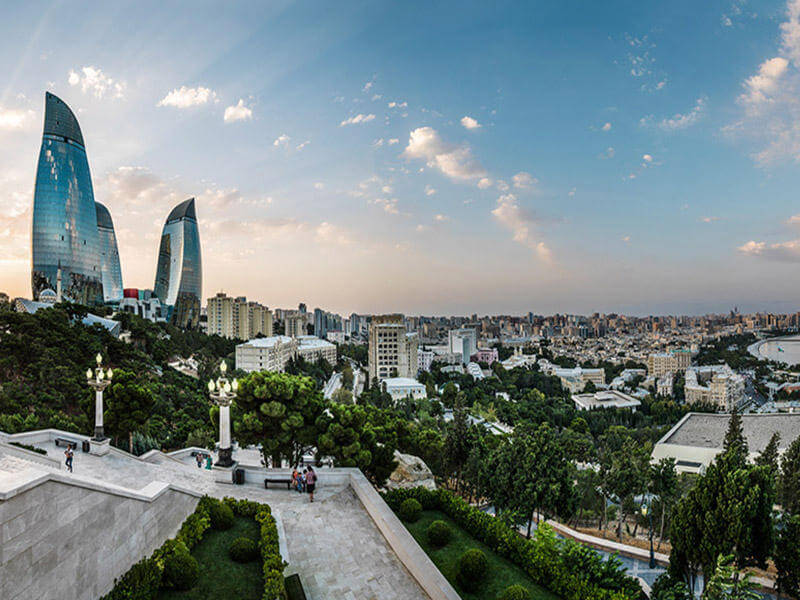
Highland Park
Highland Park, which is located in the center of the city, is considered one of the most beautiful parks of the capital. Another name of the park among the people is the observation deck. The uniqueness of this place is the possibility to view the city's fascinating landscape from here. Azerbaijan Independence Museum, as well as the Alley of Martyrs, where victims of the January 20, 1990 and the Karabakh war have been bruied, are located in the Highland park.
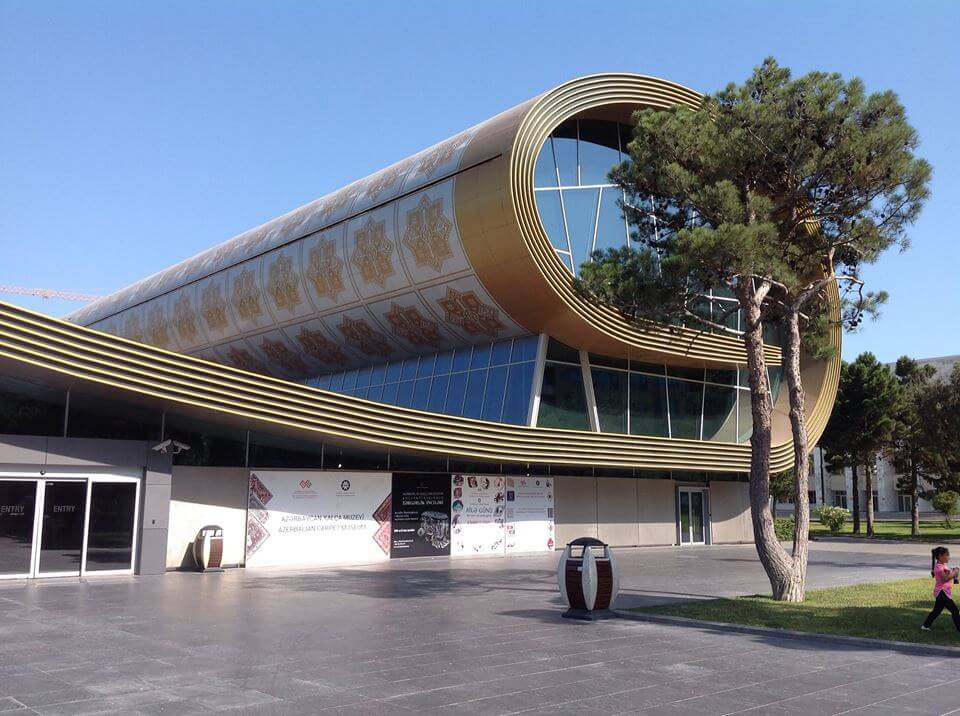
Azerbaijan Carpet Museum
Founded in 1967, it is the first museum in the world specialized in collection, preservation and study of carpets. More than 14 thousand samples of carpets, embroideries, clothes, copperwares, jewelleries, glass, wood and felt products are included in its collection. A four-storey new building of Carpet museum started to function in 2014. A wide range of hundred years old carpets, all directions of Azerbaijani carpet school are demonstrated in the museum designed by prominent Austrian architect Franz Janz. The building constructed in a unique style reminds rolled carpet. Currently, more than 13.300 exhibits are preserved in the exhibitions and stocks of the museum.
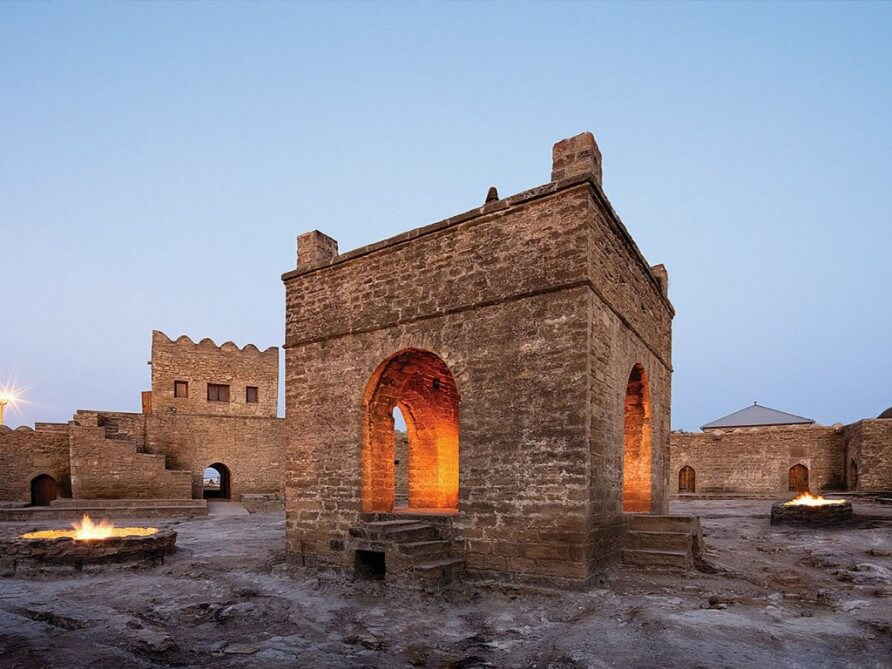
Ateshgah Temple
The Ateshgah is located in the south-eastern part of the Surakhany settlement on the Absheron peninsula. It was built in the 17th -18th centuries on the place of eternal flames where natural gas came to the surface. You will enjoy the marvelous dance of fire and wind in this never-ending eternal torch of the Land of Fire. The Ateshgah temple, which is considered one of the world's most miraculous historical sites for its unique nature, was named State Historical-Architectural Reserve in 2007.
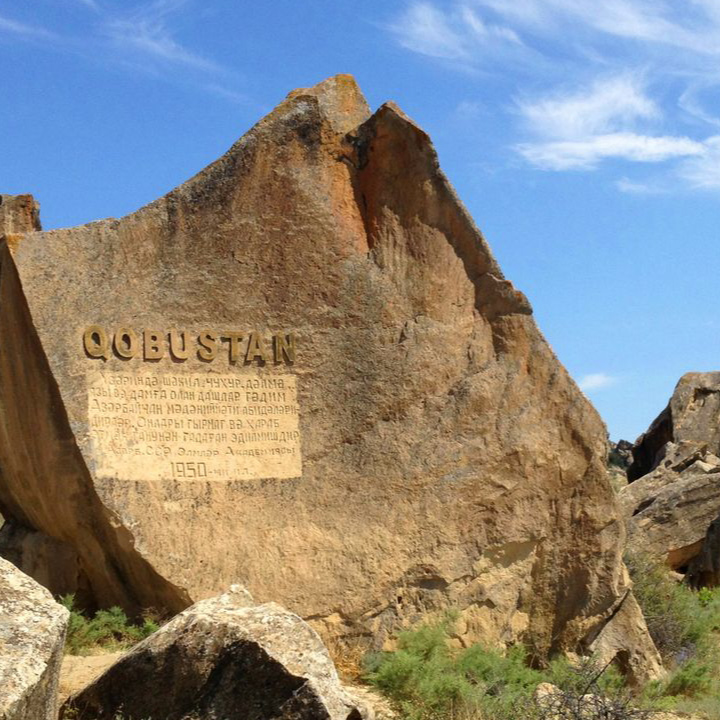
Gobustan
Gobustan preserve is located in the eastern part of Azerbaijan, in the area of the Boyukdash, Kichikdash and Jingirdagh Mountains of Greater Gobustan. Gobustan, in translation, means "ravine land". Gobustan Rock Art Cultural Landscape covers an outstanding collection of more than 6,000 rock engravings bearing testimony to 40,000 years of rock art. The site also features the remains of inhabited caves, settlements and burials, all reflecting an intensive human use by the inhabitants of the area during the wet period that followed the last Ice Age, from the Upper Palaeolithic to the Middle Ages. The site, which covers an area of 537 ha, is part of the larger protected Gobustan Reservation. The well-known Norwegian explorer and traveller Thor Heyerdahl, who repeatedly visited Azerbaijan, after studying the Gobustan petroglyphs, came to a sensational conclusion about the kinship of Norwegians and Azerbaijanis. He discovered the similarity of the ships depicted on the rocks to the vessels used by the Vikings, and concluded that the Vikings had begun their journey westward from here. Another attraction of Gobustan is Gavaldash - an original tambourine stone. Tapping on them with a small stone, you get various clear sounds, reminiscent of a drum, naghara. Gavaldash consists of shell limestone and is a flat piece of limestone. “Gobustan Rock Art Cultural Landscape” was inscribed on the World Heritage List at the World Heritage Committee’s 31st session in 2007.
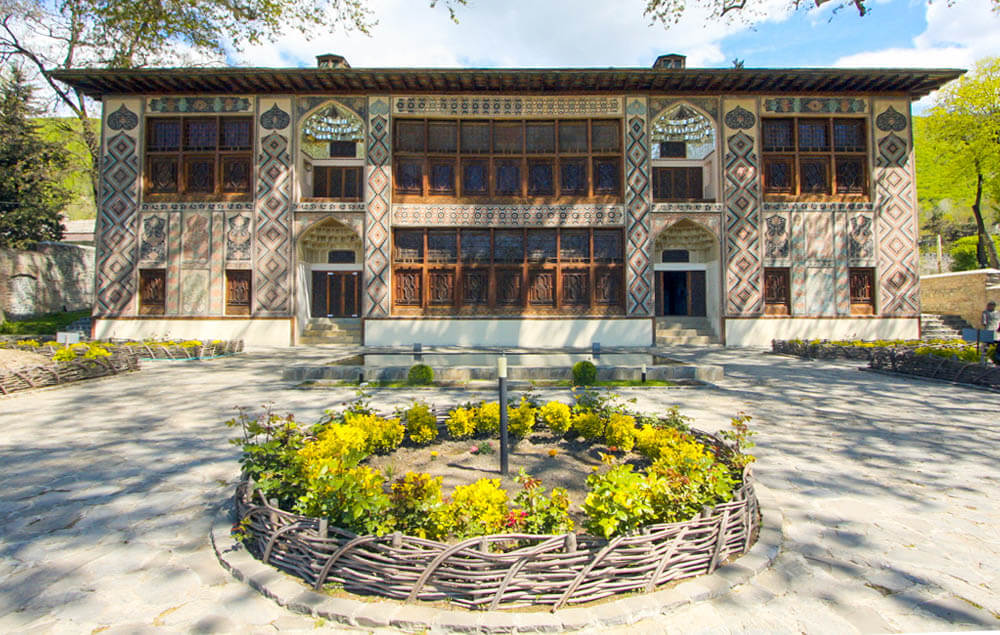
Shaki Khans’ Palace
The Palace of Shaki Khans was built in 1797 by Muhammed Hasan Khan. Palace features decorative tiles, fountains and several stained-glass windows known as “shebeke”. The exterior is decorated with dark blue, turquoise and ochre tiles in geometric patterns and the murals were coloured with tempera and are inspired by the works of Nizami Ganjavi. The interior walls of the residence are covered entirely with frescoes painted at different times during the eighteenth century. Many of the frescoes feature flowers in vases, while a series of paintings on the first floor halls depict hunting and battle scenes. Along with its pool and plane trees, the summer residence is the only remaining structure from the larger palatial complex inside the Shaki Khans' Fortress, which once included a winter palace, residences for the Khan's family and servants' quarters.
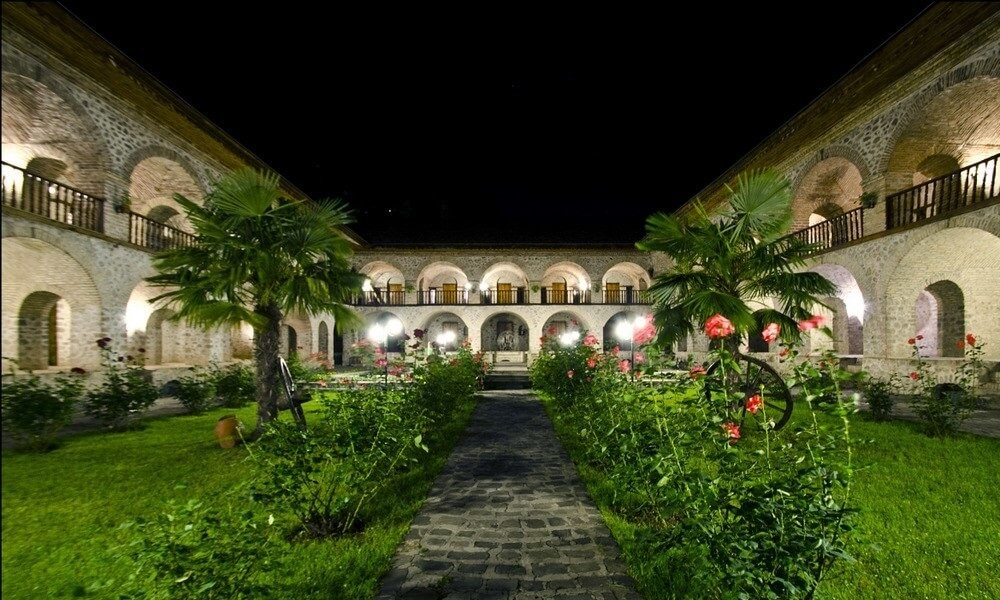
Shaki Caravanserai
Another valuable architectural monument of the 18th century is the Shaki Caravanserai. Two-storey building with deep basement is rich with original shades of the Oriental architectural style. It is possible to climb via the stone stairs from various directions of the spacious courtyard of Caravanserai to the second floor. This venue, which was a shelter for guests and merchants in the past, is currently being used as a caravanserai-hotel complex. There are all the conditions for the comfort of guests and tourists.
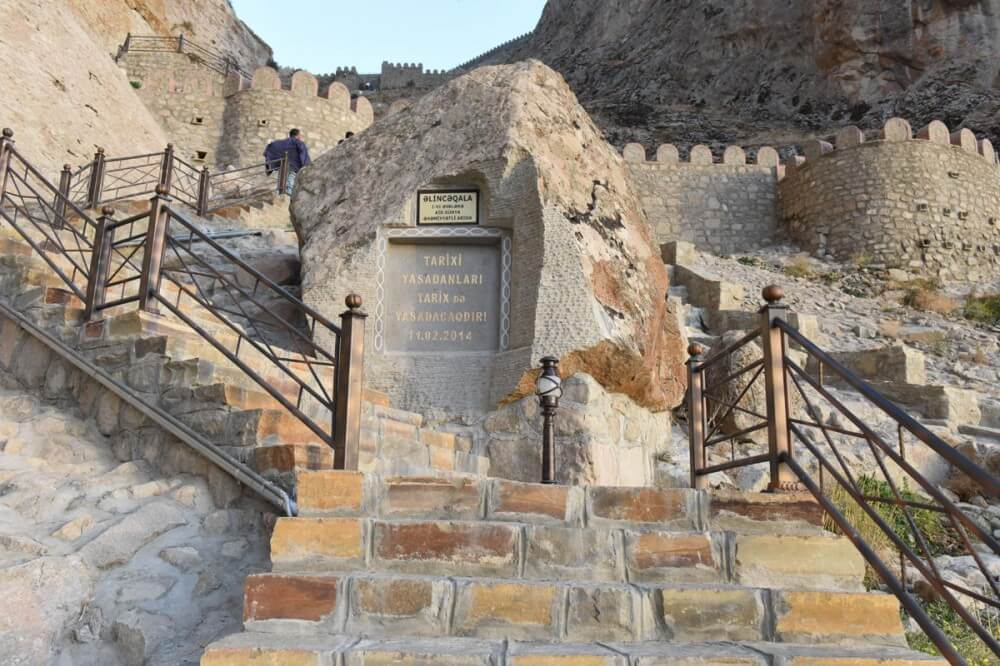
Alinja castle
Nakhchivan, which is considered one of the centres of civilization development in the East, has more than 1,500 historical and cultural monuments, and about 60 of them including the fortress city Alinja Gala have great international significance. Alinja is more widely known as treasury-house of the Turkic Seljuks, and the residence of Azerbaijani Atabek Eldanizids-state’s ruler Muzaffar al-Din Uzbek, where he spent his last years. The fortress saw many conquerors, destroying and rebuilding several times. The famous commander and Turco-Mongol conqueror Tamerlane was admired by the majesty of Alinja and even came here to personally make sure that his troops seized the impregnable fortress. Alinja was a kind of a small town, with its residential and public buildings, treasury, army and stables. Spanish traveller of the 15th century Ruy González de Clavijo described the fortress in this way: “Alinja stood at the high steep hill, surrounded by walls with towers at the bottom. Inside the walls, on the lower slopes of the mountains there were a lot of vineyards, orchards, pastures, springs and water tanks”. The restoration of the historical monument started in 2014

Shamakhi Juma Mosque
Juma Mosque, which is called the oldest mosque in the Caucasus and the Middle East after the Derbent Cathedral Mosque, is extremely interesting for researchers. It was built in 743-744 - the date was determined thanks to Arabic inscription on the facade. At that time, structures that were later called Islamic monuments of ancient architecture were built in the territory of modern Azerbaijan. Juma Mosque was built on the central trade square. Madrasa was built near it, and later became a part of its architectural complex. This mosque, which has several cultural layers, shows history of many different places Due to destructions and damage received during wars and earthquakes, mosque had to be restored several times. Latest reconstruction works were held in 2013. Entrances to mosque and its domes, decorated with ancient ornaments, were restored. Now 1,500 people can pray in Juma Mosque at the same time.

Khudaferin Bridge
Khudaferin Bridge was built in 1027 by Fazl son of Muhammad, the ruler of Shaddads (Fazl ibn Muhammad) on the river Araz. In the unique architectural monument, the bridge has traces of Azerbaijani architecture school. During the march of Agha Mohammed Shah Gajar to Azerbaijan although its part was destroyed but later was restored. Part of bridge built on natural rocks preserved till our dates. There is another bridge not far away from this bridge, which is also called as Khudaferin. The second bridge consisted of 11 sections and was built in XIII century during the Elkhanies. Both bridges were located on the Silk Road – it was of great importance in development of economic and cultural relations of Azerbaijan with countries starting from India to the Near and Middle East countries, Russia. At present, only 3 spans of bridge are intact. Located in Jabrayil region of Azerbaijan the bridges are under occupation by Armenian forces.
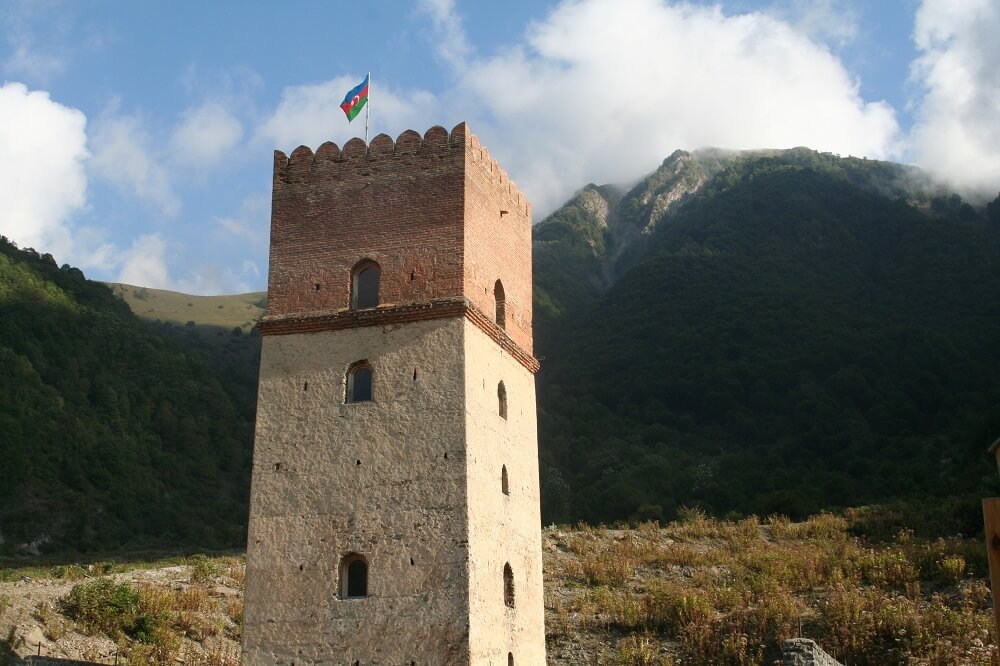
Sumug-gala
Sumug-gala is a defence castle in the Bujag neighbourhood of Ilisu village of Gakh region. It was built in the 17th-18th centuries. It is an example of a defence castle that is adjacent to a dwelling house of people living in the mountainous region with the aim of protection from the enemy. In the construction of the tower, river stones, lime mortar and baked bricks were used. There are some considerations regarding the name of the fortress. According to the legend, the tower was built by a judge of Ilisu called Sumu Khan.
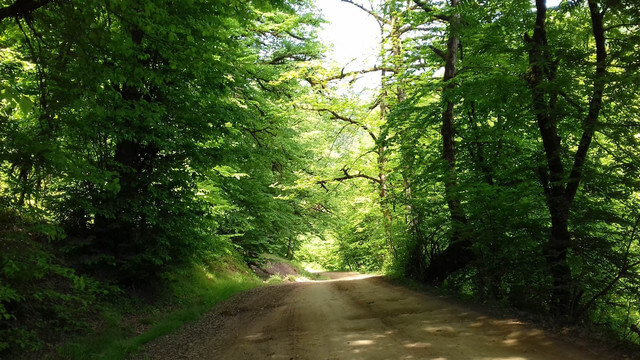
Hirkan forests and relict trees
The Hirkan Forest follows the south-western and southern coasts of the Caspian Sea. There, it forms a narrow, arching region of forest that extends from south-eastern Azerbaijan across the south. Three of the Emblematic Relict Trees of Azerbaijan grow up here. The Velvet Maple is the largest maple tree in the world. Typically, it does not grow taller than 20 to 25 metres, but in Hirkan forest, there is a multi-stemmed giant that is 52 metres tall with a crown diameter of 32 metres. The Ironwood is undoubtedly one of the most noteworthy relict tree species of the Hirkan Forests – the wood of this tree is so heavy that it sinks in water! The light- and heat-loving Caucasian Zelkova not only grows large, it is long-lived too. Some specimens in the Talysh Mountains are 800-850 years old. Hirkan also protects a number of animal species including the Caucasian leopard.

Batabat Lake
Located in Shahbuz region Batabat Lake is in 2,500 meters above sea level. One of the most unique things about Lake Batabat is that it has its very own floating island in the middle of it. This tiny island is made entirely from peat and grass, and it isn’t attached to the bottom of the lake in any way. As a result, it drifts — though slowly — throughout the year, moving as if pulled by the sun. The lake almost looks like one big moat for one tiny island, and the interest the floating island adds is what makes Lake Batabat such a photogenic place.
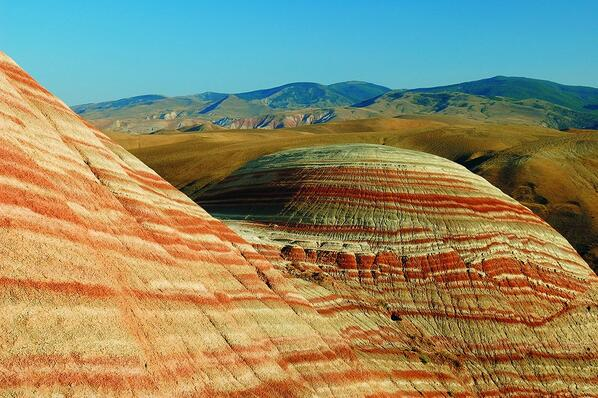
Khizi mountains
Located about 120 km from the capital the Khizi mountains are eroded shale formations with multiple colours provide stunning photo opportunities. The mountains' colours are produced by groundwater that have altered the oxidation state of the iron compounds in the earth. There are excellent trekking and hiking opportunities as well as unique aesthetic experience in the picturesque Candy Cane Mountains.
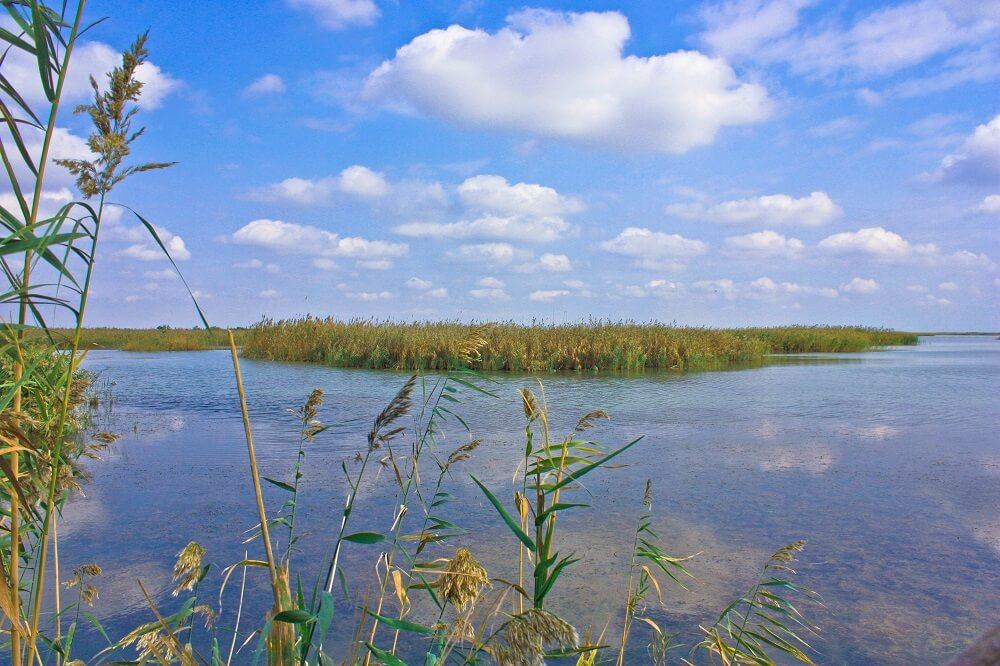
Shirvan National Park
Shirvan National Park in Azerbaijan is home to 230 species of birds, 34 of them rare, but most people go to see the beautiful, delicate jeyran or Caucasian gazelle. The gazelles protected in Shirvan National Park are considered one of the lesser spread species among all animals in the world. Moreover, Azerbaijan is the main territory where those beautiful animals live. Therefore, those animals are protected and reproduced in their homeland under natural conditions. As gazelles are the main habitat of the area, they became an inspiration for the creation of a preserve and a national park here. In addition, Shirvan National Park can be considered a home for endangered species of waterfowl birds such as flamingo, coot, swan, pelican and many others.
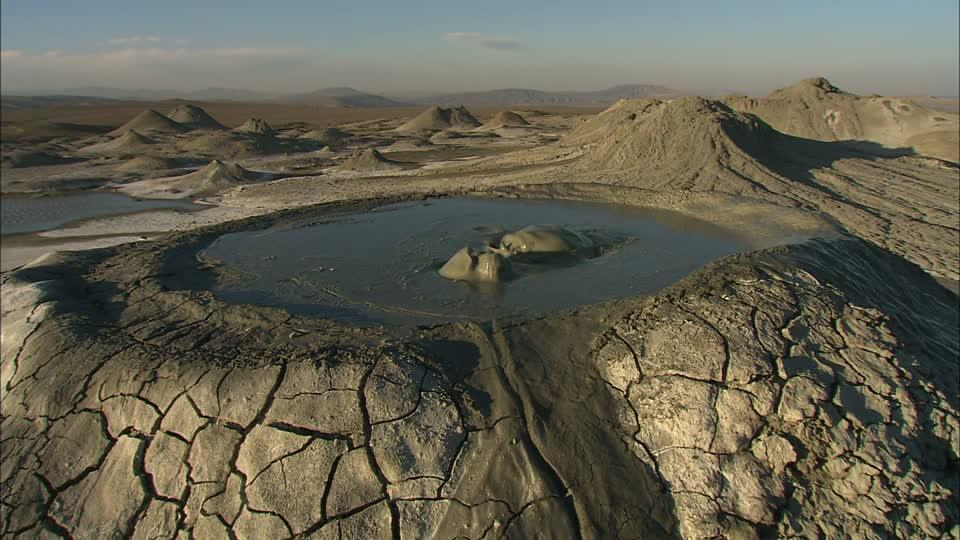
Mud volcanoes
Home to nearly a third of the world's mud volcano's, Azerbaijan features a messy, bubbling, and sometimes explosive landscape. Azerbaijan can claim to be the site of almost half of the world’s mud volcanoes, with estimates putting that figure of 50 percent still at a lowly 400 or so. While mud volcanoes (also known as “sedimentary volcanoes”) never grow to the size of a normal volcano, topping out at around 10 km in diameter and 700 meters in height, (among the largest mud volcanoes in the world are Boyuk Khanizadagh and Turaghai, both in Azerbaijan) they do occasionally get the chance to show off. Mud volcanoes are closely associated with hydrocarbon and petrochemical stores underground, hence the gas trying to escape to the surface. A few of these gas leaks are constantly on fire, shooting small perpetual flames into the air and some believe that these perpetual flames are strongly connected to the appearance of the Zoroastrian religion in Azerbaijan some 2,000 years ago.
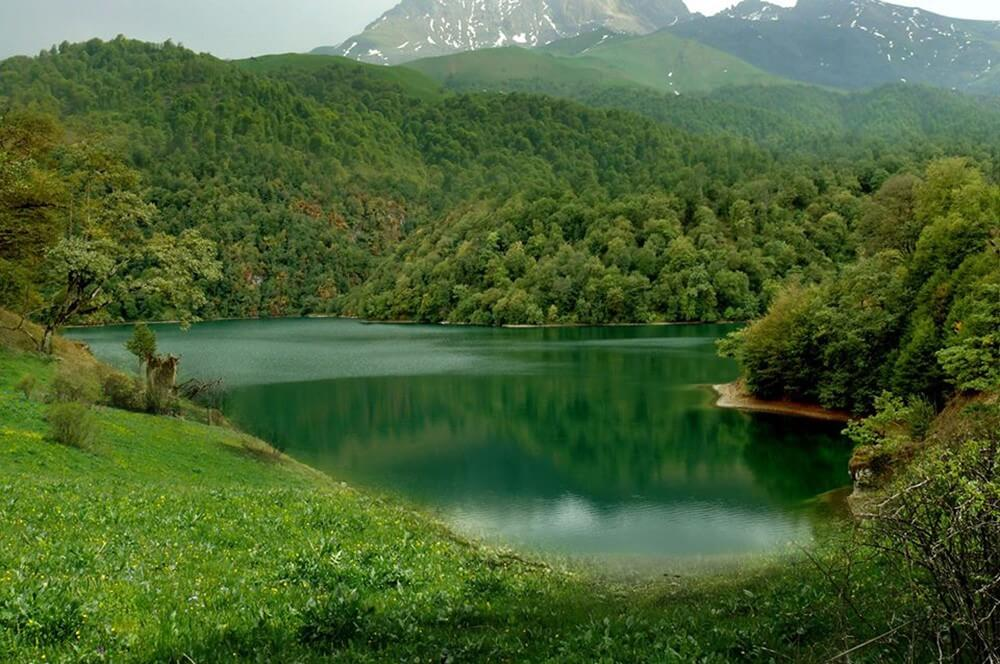
Goygol Lake
Greater Goygol area is often split into 19 lakes. One of them – lake Goygol rates as Azerbaijan’s most beautiful lake. A 12th-century earthquake created the mountain lake, which sits 1500 metres (4921 feet) above sea level. The deep blue lake (the name “Goygol” means Blue Lake in Azerbaijani) surrounded by lush forests in the Lower Caucasus Mountains stretches for almost 3 kilometres (1.9 miles). A variety of wildlife, including several species of birds and fish, call the area home too. As Goygol and the surrounding forest landscape are so charming and fascinating, it inspired many artists to write a variety of songs and poems throughout centuries.

Lahij
Lahij settlement of Ismayilli district is one of the oldest human settlements of Azerbaijan. It is located on the southern slope of the Greater Caucasus range, 1505 meters above sea level. Lahij is surrounded by Babadagh and Niyaldagh ridges along the Girdiman River. Located between two mountains provides natural fortress condition to Lahij.
In the middle of the nineteenth century about 200 copper workshops were operating in Lahij. Lahij masters are also known for preparation of firearms (rifles, various types of pistols and so on) and cold weapons (daggers, swords, knives, etc.). Local mosques, water pipes and sewerages (gorevand), Girdiman Fortress have been protected in Lahij, which has been museum – reserve since 1980, craftsmenship traditions are continued.
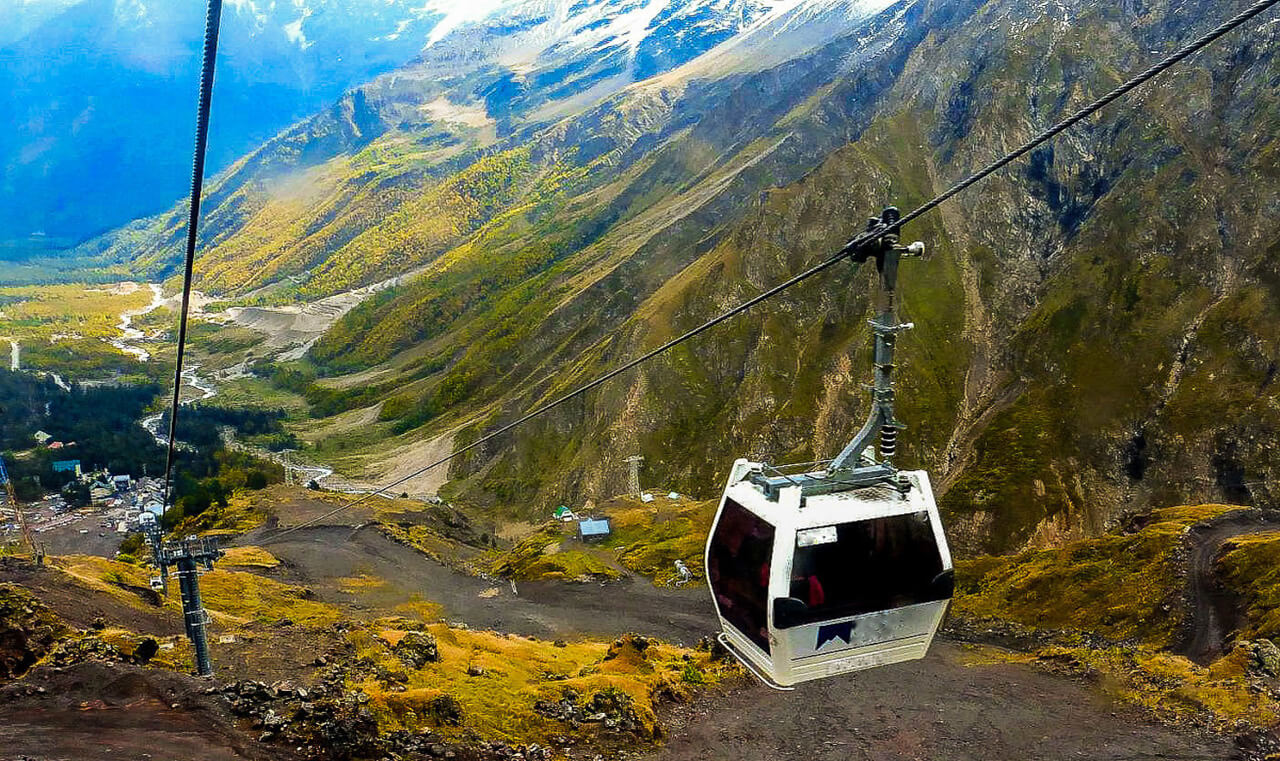
Gabala
The ancient city of Gabala, 225 km from Baku, was the capital of the Caucasian Albania state for 600 years. The Chestnut forest is the treasure of this region located at an altitude of 1000 meters above sea level. Gabala city, which is a source of pleasure in warm summer days with its mineral water springs and fresh water fountains, is a meeting place for classical music lovers. Each year Gabala hosts an international classical music festival in summer. Ancient fortresses, mausoleums, ancient tower of the IX-XI centuries, the History and Ethnography Museum in Gabala are among the must-see places for those who want to learn history.
The "Tufandag" Winter-Summer Tourism Recreation Complex, which has all the favorable conditions for relaxation in the mountainous area, is located about 4 km from Gabala city. This recreation and tourism facility provides a high level of recreation for local and foreign tourists throughout the year. The complex offers tourists a rope line tour throughout the year, skiing in winter, children's play ground, hotel and other services.